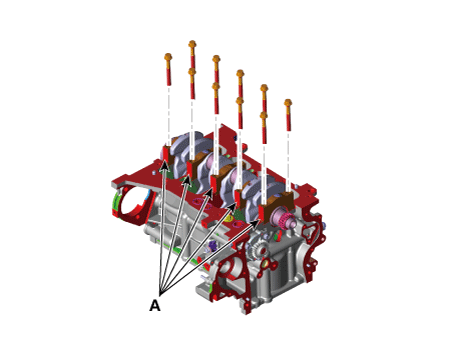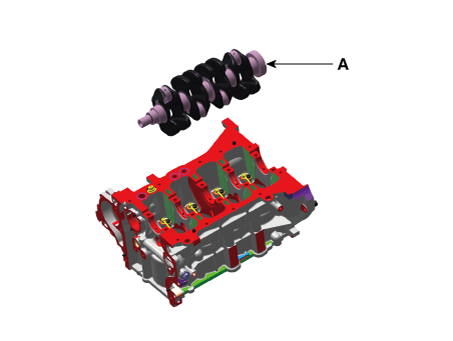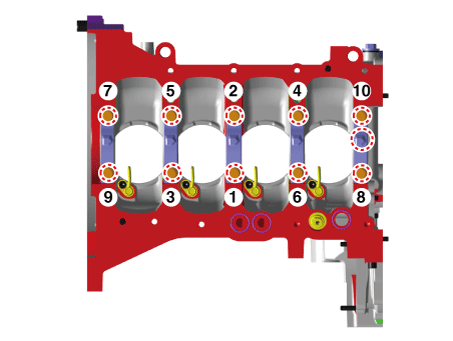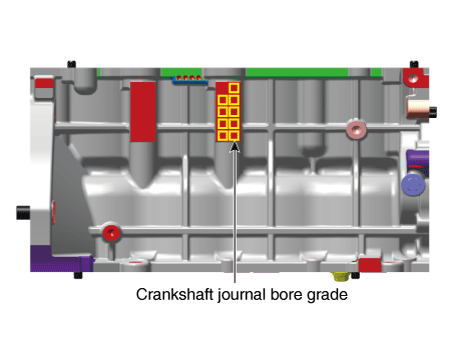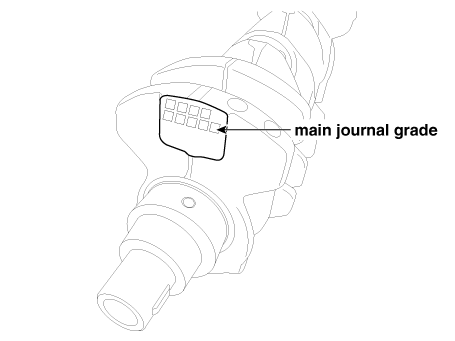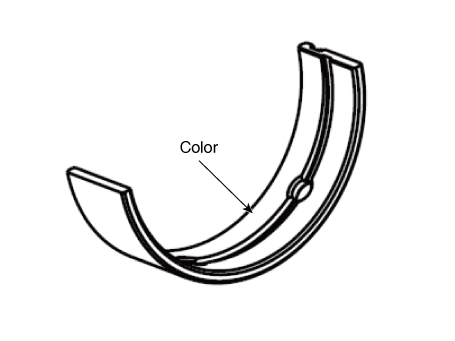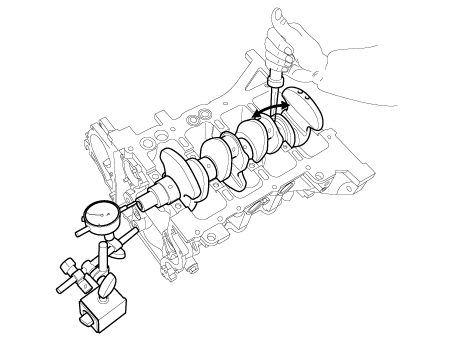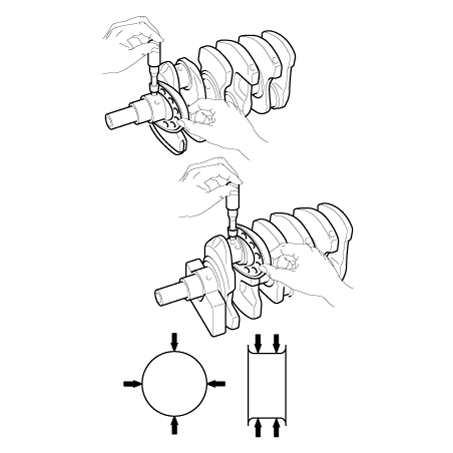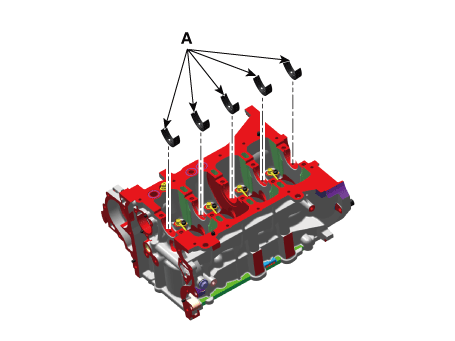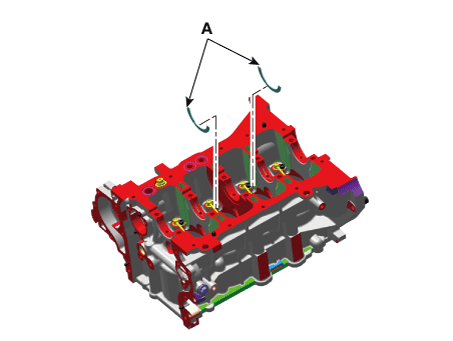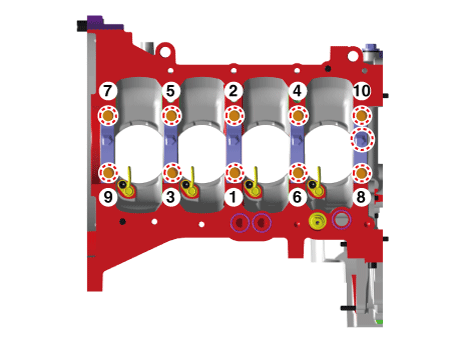Kia Rio: Cylinder Block / Crankshaft
Repair procedures
| Disassembly |
|
|
| 1. |
Remove the engine assembly from the vehicle. (Refer to Engine and Transaxle Assembly - "Engine and Transaxle Assembly”) |
| 2. |
Remove the transaxle assembly from the engine assembly. (Refer to Manual Transaxle System - "Manual Transaxle") |
| 3. |
Remove the flywheel. (Refer to Cylinder Block - "Flywheel") |
| 4. |
Install the engine to engine stand for disassembly. |
| 5. |
Remove the timing chain. (Refer to Timing System - "Timing Chain”) |
| 6. |
Remove the intake manifold. (Refer to Intake and Exhaust System - "Intake Manifold") |
| 7. |
Remove the exhaust manifold. (Refer to Intake and Exhaust System - "Exhaust Manifold") |
| 8. |
Remove the cylinder head assembly. (Refer to Cylinder Head Assembly - "Cylinder Head") |
| 9. |
Remove the water pipe. (Refer to Cooling System - "Thermostat") |
| 10. |
Remove the water temperature control assembly. (Refer to Cooling System - "Thermostat") |
| 11. |
Remove the oil pan and oil screen. (Refer to Lubrication System - "Oil Pan") |
| 12. |
Remove the ladder frame. (Refer to Cylinder Block - "Cylinder Block") |
| 13. |
Remove the piston and connecting rod assemblies. (Refer to Cylinder Block - "Piston and Connecting Rod") |
| 14. |
Remove the main bearing caps (A) and check oil clearance.
|
| 15. |
Check the crankshaft end play. |
| 16. |
Lift the crankshaft (A) out of engine, being careful not to damage journals.
|
| Inspection |
| 1. |
Check the connecting rod bearing oil clearance.
|
|||||||||||||||||||||||||||||||||||||||||||||||||||||||||||||||||||||||||||||||||||||||||||||||||||||
| 2. |
Check crankshaft end play. Using a dial indicator, measure the thrust clearance while prying the crankshaft back and forth with a screwdriver.
If the end play is greater than maximum, replace the center bearings as a set.
|
| 3. |
Inspect the crankshaft main journals and pin journals. Using a micrometer, measure the diameter of each main journal and pin journal.
|
| Reassembly |
| 1. |
Install the crankshaft main bearings.
|
| 2. |
Place the crankshaft (A) on the cylinder block.
|
| 3. |
Install the main bearing cap (A).
|
| 4. |
Check the crankshaft end play. |
| 5. |
Assemble the other parts in the reverse order of disassembly. |
 Piston and Connecting Rod
Piston and Connecting Rod
Repair procedures
Disassembly
•
Use fender covers to avoid damaging painted surfaces.
...
 Cylinder Block
Cylinder Block
Repair procedures
Disassembly
•
Use fender covers to avoid damaging painted surfaces.
...
Other information:
Kia Rio 2017-2025 YB Owners Manual: Checking the tire inflation pressure
1. After driving approximately 7 ~ 10 km or about 10 min (4 ~ 6 miles), stop at a safe location. 2. Connect the filling hose (3) of the compressor (clip mounted side) directly and then connect the fill ing hose (3) (opposite side) to the tire valve. 3. Connect between compressor and the vehicl ...
Kia Rio 2017-2025 YB Owners Manual: Heating and air conditioning
1. Start the engine. 2. Set the mode to the desired position. To improve the effectiveness of heating and cooling : - Heating: - Cooling: 3. Set the temperature control to the desired position. 4. Set the air intake control to the outside (fresh) air or recirculated air position. 5. Set ...



